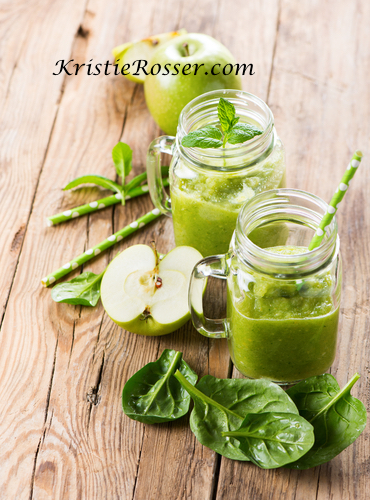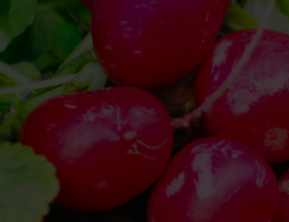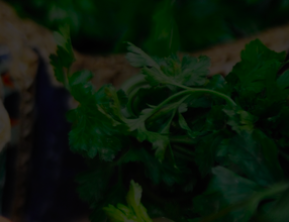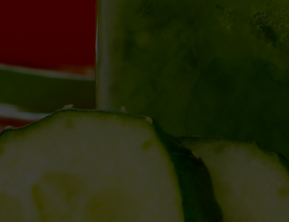 Why Juice: Juices are rapidly absorbed into the bloodstream and are the quickest way in which your body can digest nutrients. I use juicing over smoothies when I feel like I need a highly concentrated nutrient boost for my energy and immune system.
Why Juice: Juices are rapidly absorbed into the bloodstream and are the quickest way in which your body can digest nutrients. I use juicing over smoothies when I feel like I need a highly concentrated nutrient boost for my energy and immune system.
For example, when: I am highly stressed, feeling a cold coming on, recovering from an illness or surgery, or when I feel like my adrenals, liver and digestion need a rest.
I find that juicing gives me quick energy. I start my day with a green juice, and love to drink green juice after my morning run. I feel like I recover faster, have less fatigue, and less soreness when I drink a green juice after my morning run.
Health Benefits: Dark leafy greens are rich in chlorophyll, which is believed to have the power to regenerate, cleanse, and repair your body at the most basic cellular level.
Increasing your consumption of chlorophyll also increases the number of red blood cells in your body, improving how effectively your body absorbs and uses oxygen. Higher levels of oxygen in the blood make you healthier. Eating living food, makes you more “Alive.”
ProTip: Depending on which greens look best to me at the store, I sometimes switch up the leafy greens and use collard greens, Swiss chard, beet root, spinach, kale, or dandelion greens.
Juicing at Home: When you make your own juices, you have complete control over what you include in them. You can adjust flavor and ingredients to your taste, and what you feel your body needs. For example, adding more greens and beets will boost and cleanse your liver. You can avoid overly processed, heated, pasturized, preserved, chemicals, pesticides, coloring and sugars. And you will save money. An $8 bottle of juice at the store can be made for roughly about $3.50 at home, for example. You can save even more money by gardening and growing your own produce, or shopping for in-season produce.
ProTip: Keep your fruit and vegetables ready for juicing by washing them before storing them.
Purchasing and Storing Fruits and Vegetables: See my tips for washing produce here.
- Always wash fruit and vegetables before juicing.
- Always use fresh fruit and vegetables for juicing.
- Use organic when possible.
- To save money and obtain fresher produce:
- Purchase fruit or vegetables that are in season or
- Grow a garden,
- Plant fruit trees
- Keep your fruit and vegetables ready for juicing by washing them before storing.
- Most fruits and hardier type vegetables can be stored at room temperature. The more delicate and perishable items such as tomatoes, berries, leafy greens, celery, cucumbers, and herbs should be stored in the refrigerator until needed.
Preparation of Fruit and Vegetables:
If using fruits with hard or inedible skins such as mangoes, melons, or pineapple, always peel before juicing,
Citrus fruit can be juiced in the juicer if peeled first,
All fruits with pits, hard seeds, or stone fruits (nectarines, peaches, mangoes, apricots, plums and cherries) must be pitted before juicing,
A small amount of lemon juice can be added to apple juice to prevent browning.
Pro Tip: For delicious and cold orange juice or apple juice, refrigerate the fruit before juicing.
Juicing Technique:
When juicing a variety of ingredients with varying textures, start with the softer textured ingredients on low speed then change in to high speed for harder texture ingredients.
If you are juicing herbs, sprouts or leafy green vegetables either wrap them in the middle of a combination of ingredients on low speed to obtain the best extraction.
If juicing herbs or leafy green vegetables on their own, the juice yield will be low due to the nature
of centrifugal juicing. It is advised to juice them as with a combination of fruits and vegetables.
ProTip: I find that you get more juice extraction from of your leafy greens when you push them through with a “harder” produce like celery, apple, or cucumber. For example: I add the kale leaves, and push it through adn wrapped with the cucumber. Next, the spinach leaves pushed through and wrapped with the celery. The romaine goes in next easily on its own. Then the apple, followed by the lemon and voila! You now have your energy for the day. This goes for herbs as well–push them through and wrap them with a “harder” produce for better extraction.
All fruit and vegetable produce different amounts of liquids. And flavors. This varies within the same group (one batch of tomatoes can produce more juice than another batch). Juice recipes are not exactly the precise quantities for this reason. The varied amount of juice extracted is not crucial to the success of a particular mix or recipes. Take what you can get from the produce you have, and enjoy the variety you create each time to make “the same” recipe.
Pro Tip: to extract the maximum amount of juice, always push the “food pusher” down slowly, and use appropriate juice speed if your juicer has varied speed (low for softer produce, for example).
Getting the Right Blend:
It is easy to create great testing juices. It you have been making your own vegetable and fruit juices, then you know how simple it is to invent new combinations. Taste, color, texture, and ingredient preferences are a personal thing. Just think of some of your favorite flavors and foods—would they work well together or would they clash? Some bold flavors could over-power the more subtle flavors. It is however, a food rule of thumb to combine starchy, pulpy ingredients with those high in moisture.
Using the Pulp:
The remaining pulp left over after juicing fruit or vegetables is mostly fiber and cellulose which, like the juice, contains vital nutrients necessary for the daily diet and can be used in many ways.
However, like the juice, pulp should be used that day to avoid loss of vitamins.
Some of the uses of pulp are to bulk out rice dishes, thicken casseroles or soups, or in the case of fruit pulp, simply placed in a baking dish topped with meringue and baked for simple dessert. Apart form the consumption, use pulp is a great use in the garden for compost.
Pro Tip: When using the pulp, there may some pieces of fruit or vegetable remaining. These should be removed before using the pulp in any recipes.
Daily Green Juice: (great for after a long work-out!)
10-12 large kale leaves
2 large handfuls of spinach
6-8 large romaine leaves
2 cucumbers
6 celery stalks
2 green apples
2 lemons
ProTip: Substitute any of the greens for what you have available–keep the recipes flexible and enjoyable. Use a red apple if you dont have a green one. Keep it simple and dont worry about having the “exact” ingredients.
Wash the produce well.
Core the apple and peel the lemon.
Wrap the greens and juice them with “harder” produce–For example, wrap the kale with the cucumbers, wrapt the spinach with the celery, and wrap the romaine with the apples, and end with the lemons.
Juice and enjoy! (Will store in the fridge for up to 72 hours in a mason jar; the ingredients will separate, so just shake before drinking; Alternately, the juice can be frozen for up to 3 months in the freezer–I will often freeze the juice in ice cube trays and pop the cubes out into mason jars before I leave for work and let them melt as I drive to work for easy, quick and delicious pre-made juice!)
Life Life Optimally,
Kristie
 Kristie is a wife and mother of 4 and an athlete. She has been working in healthcare for more than 25 years. Kristie’s goal is to assist her patients to achieve and maintain an exceptional level of health and life-balance. She successfully blends prevention, optimization, hormone therapy, and age management with balanced and healthy living into her progressive wellness and integrative medical practice.
Kristie is a wife and mother of 4 and an athlete. She has been working in healthcare for more than 25 years. Kristie’s goal is to assist her patients to achieve and maintain an exceptional level of health and life-balance. She successfully blends prevention, optimization, hormone therapy, and age management with balanced and healthy living into her progressive wellness and integrative medical practice. 












Leave a Reply